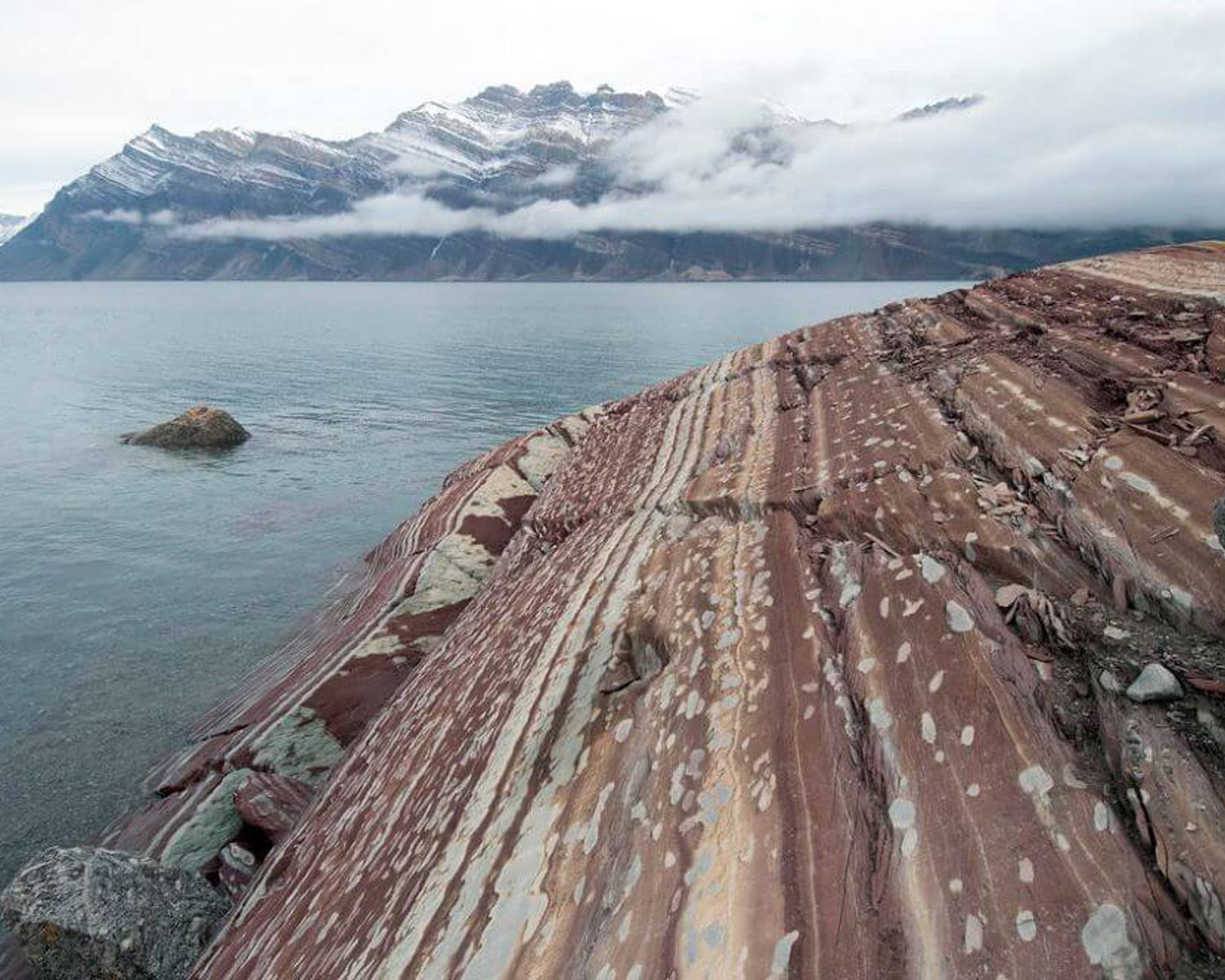Atmospheric methane capture by zeolites

Zeolites are porous minerals that can capture methane (Jackson 2019).
Many studies focus on zeolites’ capacity to transform methane into more useful methanol (Tomkins et al. 2017; Ravi et al. 2019; Mahyuddin et al. 2019), and into syngas (Hambali et al. 2022), and there is also significantly scholarly attention for the CO2 capture potential of zeolites (see for instance Findley and Sholl, 2021; Tao et al. 2023; and DACCS), with the company Removr currently building a large scale carbon capture device using zeolites (https://www.removr.no/).
Yet, the transformation of methane into “less harmful” CO2 can already provide major climate benefits (Jackson 2019; Brenneis et al. 2021). As a material, zeolite is very inexpensive and often found in clay, and therefore, as almost all popular science references highlight, currently used to make cat litter. The methane capture potential of zeolites can be further enhanced if treated with very small quantities of metals like copper (Brenneis et al. 2021). Methane capture through copper treated zeolites would work especially well when the gas is present in larger quantities, but can also function in small concentrations under relatively low temperatures (Brenneis et al. 2021).
Analysis overview

Technological Readiness Level (TRL)
Low 1
Cobo et al's (2023) review assigns methane oxidation in general a very low technological readiness level.
Nisbet Jones et al (2021) write that zeolite-using devices are already in widespread use, for example by oxygen concentrators in use in hospitals. According to the authors, this makes it more likely that zeolite-based methane capture could be more easily scaled up than other more experimental technologies. However, given the relative novelty around the usage of zeolites for methane capture, many questions remain open. Moreover, not all zeolite structures are useful, as Kim et al (2013) showed after screening over 87,000 zeolite structures for their capture potential.
Due to the urgency given to methane mitigation, there seems to be great potential for future developments, with an MIT team working on the idea receiving a $2 million development grant from the U.S. Department of Energy (news.mit.edu/2022/dirt-cheap-solution-common-clay-materials-may-help-curb-methane-emissions).
Technological Readiness Level (TRL)
A technology with a TRL of 1-3: TRL 1 – Basic; TRL 2 – Concept formulated; TRL 3 – Experimental proof of concept

Scalability
Medium 2
Scaling up is a major issue of concern to all methane capture technologies given the low methane concentrations and therefore large amounts of air required (Lackner, 2020; Jackson, 2021). Zeolites too would be much more effective close to sources of concentrated emissions. This could limit the effective scalability.
However, due to the low costs and energy requirements, zeolites application could also be relatively easily scalable, with economies of scale potentially probably down costs further. Moreover, the chemical process releases heat, and air with above 0.5 percent concentration of methane would provide more energy than was required to start the process (Brenneis et al, 2021). This means such devices could be used to generate energy when deployed near very concentrated sources.
Some zeolites can capture methane at room temperature, and because the goal would be to transform CH4 into CO2, and the transformed methane could be released after its transformation into carbon dioxide, there would be no need for the construction and maintenance of compression, purification, storage or related infrastructure (Ming et al 2022). This could mean that potential application could be done at many and diverse sites, rather than other capture techniques relying on storage (see DACCS, BECCS, and CCS).
Scalability
Physically somewhat scalable; linear efficiency

Timeliness for near-future effects
Unknown 0
Methane mitigation holds the promise of providing major climate benefits in a short timespan (IPCC AR6 WG3, 2022; Sawyer et al, 2022).
Nisbet Jones et al, 2021 write that the already widespread use of similar techniques in other areas, they believe they ‘could likely be readily upscaled in a way that a more experimental technology could not, which is a significant advantage when dealing with the immediate need for decarbonization’. However, in a short comment in Nature Sustainability Klaus Lackner (2020) also notes that the short lifetime of tropospheric methane in comparison to CO2 requires methane destruction measures to treat significant amounts of air to make a meaningful difference.

Northern + Arctic potential
Low 1
There have been no studies on the potential role of zeolites for Arctic methane. Physically, zeolite-based methane capture devices would ideally be placed close to point source emissions. Because this method to capture methane would not need storage facilities and related infrastructure, some of the objections against DACCS and BECCS sites for remote regions of the Arctic do not apply to zeolite capture facilities.
Northern + Arctic potential
No noticeable extra positive effect beyond the global average; technology is unsuited to the Arctic

Global potential
Unknown 0

Cost - benefit
Cost-effective 3
Cost - benefit
Low investment cost compared to the avoided damage cost (e.g., a few %) and/or inexpensive relative to other measures with similar impact

Environmental risks
Low risk 3
Environmental risks
Very limited, site-specific effects restricted to the solution deployment location only

Community impacts
Beneficial 3
Community impacts
Significant benefits to communities

Ease of reversibility
Easy 3

Risk of termination shock
Low risk 3
Risk of termination shock
Low or insignificant termination shock or damage

Legality/governance
Possible 3
Legality/governance
Currently legal to deploy, with governance structures in place to facilitate it and/or financial incentives to develop it

Scientific/media attention
Medium 2
Scientific/media attention
Some attention within the scientific community, including published research and funding programmes; some media attention; some commercial interest
References
Alonso, A., Moral-Vico, J., Markeb, A. A., Busquets-Fité, M., Komilis, D., Puntes, V., ... & Font, X. (2017). Critical review of existing nanomaterial adsorbents to capture carbon dioxide and methane. Science of the total environment, 595, 51-62. https://doi.org/10.1016/j.scitotenv.2017.03.229
Brenneis, R. J., Johnson, E. P., Shi, W., & Plata, D. L. (2021). Atmospheric-and low-level methane abatement via an Earth-Abundant Catalyst. ACS Environmental Au, 2(3), 223-231. https://doi.org/10.1016/j.scitotenv.2017.03.229
Cobo, S., Negri, V., Valente, A., Reiner, D. M., Hamelin, L., Mac Dowell, N., & Guillén-Gosálbez, G. (2023). Sustainable scale-up of negative emissions technologies and practices: where to focus. Environmental Research Letters, 18(2), 023001. https://doi.org/10.1088/1748-9326/acacb3
Findley, John, & Sholl, David. (2021). Computational Screening of MOFs and Zeolites for Direct Air Capture of Carbon Dioxide under Humid Conditions. J. Phys. Chem. C 2021, 125, 44, 24630–24639. https://doi.org/10.1021/acs.jpcc.1c06924
Hambali, H. U., Jalil, A. A., Abdulrasheed, A. A., Siang, T. J., Gambo, Y., & Umar, A. A. (2022). Zeolite and clay based catalysts for CO2 reforming of methane to syngas: a review. International Journal of Hydrogen Energy. https://doi.org/10.1016/j.ijhydene.2021.12.214
Kim, J., Maiti, A., Lin, L. C., Stolaroff, J. K., Smit, B., & Aines, R. D. (2013). New materials for methane capture from dilute and medium-concentration sources. Nature communications, 4(1), 1694. https://doi.org/10.1038/ncomms2697
Lackner, K. S. (2020). Practical constraints on atmospheric methane removal. Nature Sustainability, 3(5), 357-357. https://doi.org/10.1038/s41893-020-0496-7
Ming, T., Li, W., Yuan, Q., Davies, P., De Richter, R., Peng, C., ... & Zhou, N. (2022). Perspectives on removal of atmospheric methane. Advances in Applied Energy, 100085. https://doi.org/10.1016/j.adapen.2022.100085
Nisbet-Jones, P. B., Fernandez, J. M., Fisher, R. E., France, J. L., Lowry, D., Waltham, D. A., ... & Nisbet, E. G. (2022). Is the destruction or removal of atmospheric methane a worthwhile option?. Philosophical Transactions of the Royal Society A, 380(2215), 20210108. https://doi.org/10.1098/rsta.2021.0108
Mahyuddin, M. H., Shiota, Y., & Yoshizawa, K. (2019). Methane selective oxidation to methanol by metal-exchanged zeolites: a review of active sites and their reactivity. Catalysis Science & Technology, 9(8), 1744-1768. https://doi.org/10.1039/C8CY02414F
Ravi, M., Sushkevich, V. L., Knorpp, A. J., Newton, M. A., Palagin, D., Pinar, A. B., ... & van Bokhoven, J. A. (2019). Misconceptions and challenges in methane-to-methanol over transition-metal-exchanged zeolites. Nature Catalysis, 2(6), 485-494. https://www.dora.lib4ri.ch/psi/islandora/object/psi:25202
Sawyer, W. J., Genina, I., Brenneis, R. J., Feng, H., Li, Y., & Luo, S. X. L. (2022). Methane emissions and global warming: Mitigation technologies, policy ambitions, and global efforts. https://doi.org/10.38105/spr.8u4spgvc0e
Tao, Z., Tian, Y., Ou, S. Y., Gu, Q., & Shang, J. Direct air capture of CO2 by metal cation‐exchanged LTA zeolites: Effect of the charge‐to‐size ratio of cations. AIChE Journal, e18139. https://doi.org/10.1002/aic.18139
Tomkins, P., Ranocchiari, M., & van Bokhoven, J. A. (2017). Direct conversion of methane to methanol under mild conditions over Cu-zeolites and beyond. Accounts of chemical research, 50(2), 418-425. https://doi.org/10.1021/acs.accounts.6b00534







